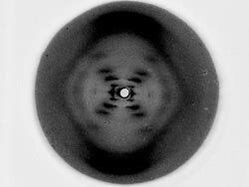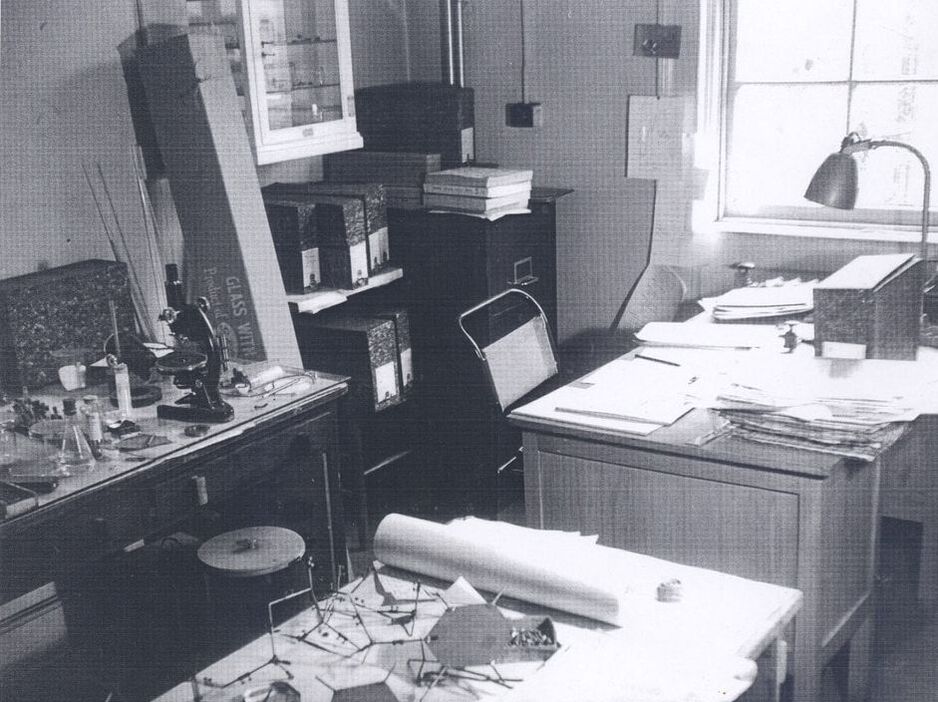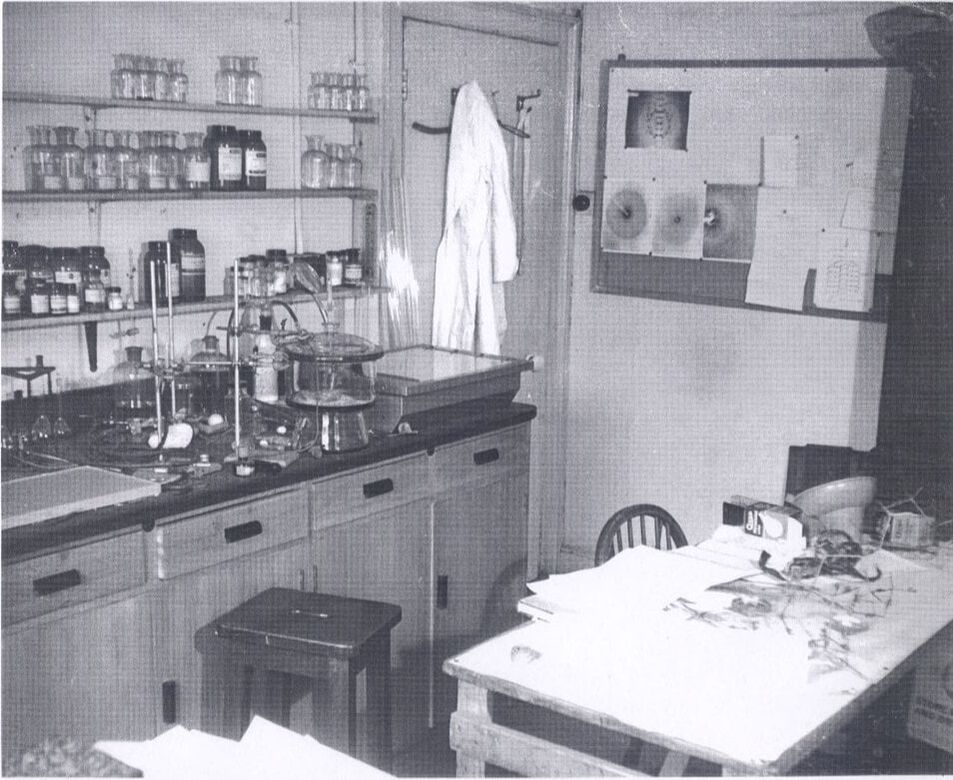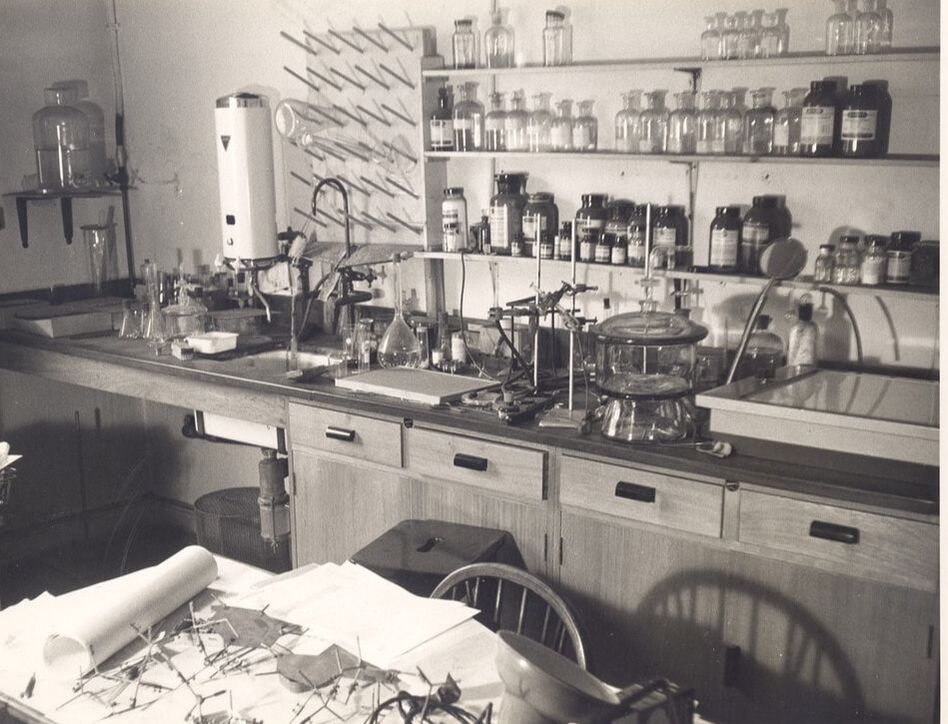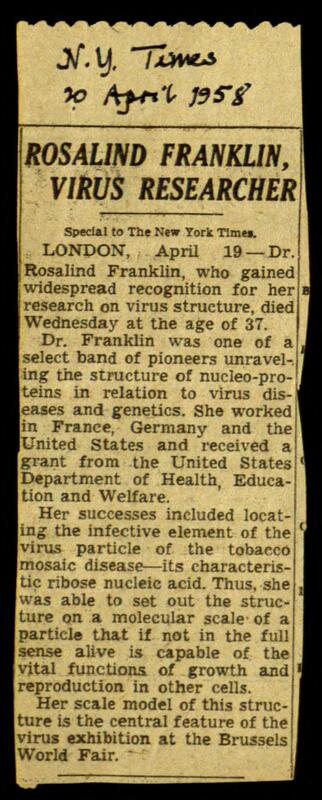It was during a trip to America to look for a research grant from the NIH, in the summer of 1956, when Franklin began to experience sharp abdominal pain and swelling. On her return to London in September of that year, her doctor suspected she had ovarian cancer. It was confirmed with a surgery. The next month she had another surgery. She finally returned to work in the first month of the new year. With her illness, the placement of her lab went from inconvenient to problematic and exhausting. Throughout 1957, Franklin underwent many treatments and surgeries, going back to work as much as she could. At Birkbeck, Franklin and her team produced a good number of journal articles, including "The Helical Arrangement of the Protein Sub-Units in Tobacco Mosaic Virus", "The Structure of Turnip Yellow Mosaic Virus: X-Ray Diffraction Studies", "On the Structure of Some Ribonucleoprotein Particles", "Order-Disorder Transitions in Structures Containing Helical Molecules", "The Structure of Viruses as Determined by X-Ray Diffraction", and "The Crystal Structure of Tipula Iridescent Virus as Determined by Bragg Reflection of Visible Light". Franklin made numerous contributions to the study of plant viruses while at Birkbeck, and even began planning a project studying the polio virus. April, 1958
Legacy Throughout her life, Rosalind Franklin made so many contributions to science. She started with using x-ray diffraction for coal research and then turned that technique to study biological molecules. She was instrumental in discovering the structure of DNA, and made great contributions to studying plant viruses. Her work with coal earlier on was groundbreaking. Franklin died before she was 38. I wonder what she would have done if she lived a longer life. I wonder how she would have wanted to be remembered. Some people see her as a victim -- a martyr -- of sexism in science. Others see her as an amazing scientist who accomplished so much in her short life. Others don't remember her at all. I wonder what she would have wanted. How would she have wanted her story told? How would she have wanted the world to remember what she did?
7 Comments
Mia Enriquez
1/12/2022 10:55:50 am
I couldn't ask for a better resource on Rosalind Franklin -- you have made it easy to learn about her and I appreciate all of the reading and research you did on behalf of all of us who are lazier than you. This was a fantastic overview of her work and contributions. Thank you for sharing her story!
Reply
Nathan E
1/12/2022 10:59:07 am
It's really interesting to see the other work she contributed to outside of the structure of DNA and I like how you referenced your previous posts at the end; it acts as a nice wrap up of everything you've discussed.
Reply
Natalie Nardino
1/12/2022 11:00:48 am
Its sad to see that she got so little credit for everything she did. Your blog did a wonderful job of telling her story. I had no idea how much she had done for the scientific community.
Reply
Anne P. Sharp
1/12/2022 11:03:41 am
What fabulous use of primary source materials--in this post and throughout the blog! Photo selection is poignant and sets the tone for this look at Franklin: A life too short. Nicely done!
Reply
Nathan Rabinovitch
1/12/2022 11:04:02 am
Before your blog, I had no idea that she had any connection to coal. Thank you for sharing her story with us through this blog.
Reply
Anne P. Sharp
1/12/2022 11:05:59 am
https://giphy.com/gifs/coronavirus-virus-sarscov2-fp0MsYYaQQtQtCJXxr
Reply
Anne P. Sharp
1/13/2022 07:19:00 am
Cool photos of her home/workspace!
Reply
Leave a Reply. |
AuthorLoren Sinclair is a high school student interested in chemistry, art, computer science, theater, and everything else! They are writing this blog to tell Rosalind Franklin's often untold tale, from her life story to the science behind her work. Archives
January 2022
CategoriesSources |
